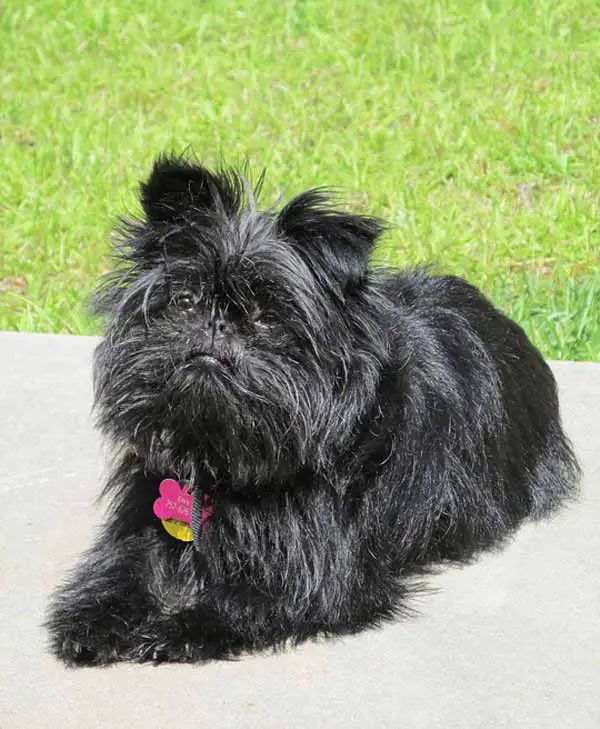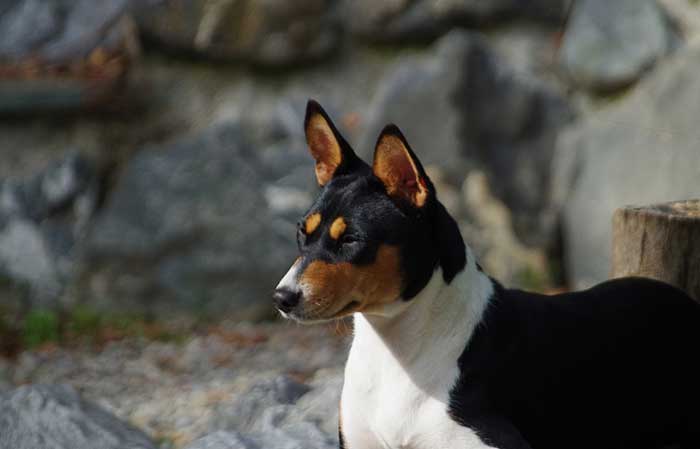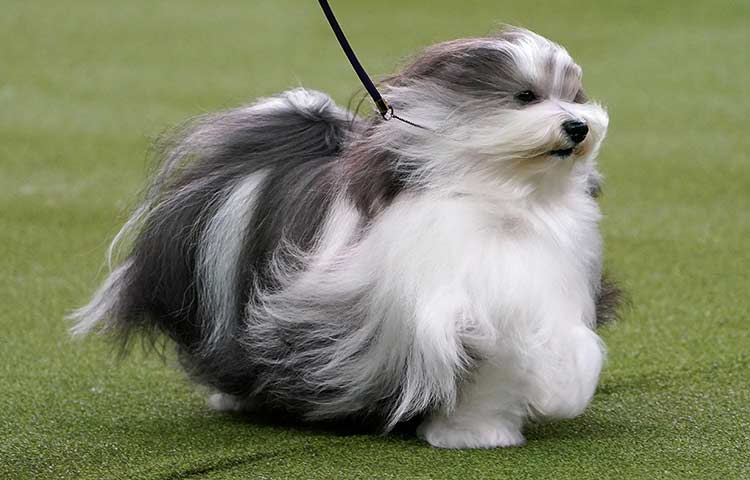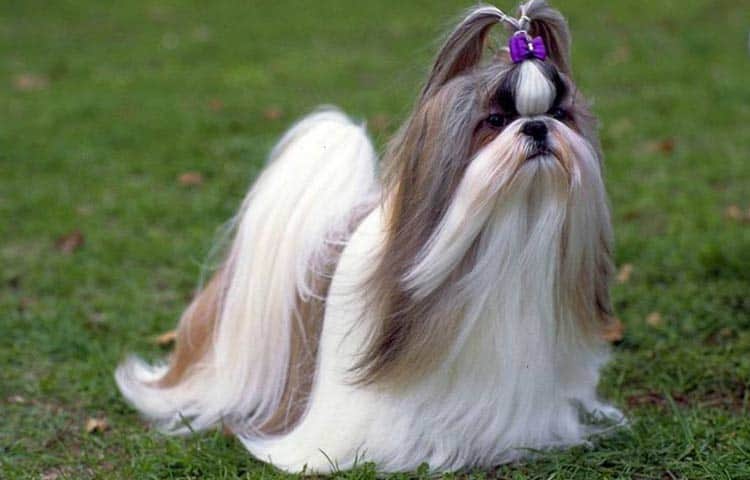One of the greatest disadvantages of having a canine for a pet is the shedding of the hair. Not only does it require you to constantly clean up after your pet, but it means it contains allergens. Luckily, there are low shedding dogs that don’t have this disadvantage.
Various dog breeds have been nicknamed hypoallergenic dogs because they have low shedding tendencies. The less hair they shed, the less dander they have. These dogs include the Bedlington Terrier, Bichon Frise, Cotton de Tuléar, Lhasa Apso, Afghan Hound, Bouvier Des Flandres, Komondor, among many others.
These dogs have numerous advantages as pets but for this article, we shall focus on their low shedding characteristic. To learn more about each and every one of these breeds, keep reading. We have been categorized our non-shedding dog list into small and large breeds
Small Dog Breeds that Don’t Shed
Affenpinscher

From the toy family, the affenpinscher is a small-sized dog weighing approximately 20 pounds. It has a wiry coat covering its entire body including its eyes. What makes it even the name monkey dog is their less than seasonal shedding which allows for them to have a dense colored coat throughout their bodies. What’s more, even with less shedding, you also don’t need to regularly groom, biannual trimmings and weekly brushing is sufficient.
Australian Silky Terrier
Next up is the Australian Silky Terrier which also weighs an average of just ten pounds in their adult stage. As small as they are, these hunting dogs are quite feisty and not to be played around with. In terms of appearance, they have a long coat that’s equally easy to care for and groom. A weekly combing is all you will need.
Basenji

Jumping to Africa, the Basenji is an African hunting dog that resembles many breeds of the hound family. Short and stout, the basenji has a unique reputation for being quiet and peaceful.
No unnecessary barking nor howling. As for its coat, they have short and fine low shedding hair that you’ll rarely see a lint of. They are very calm and collected and tend to do things by themselves, including grooming.
Bedlington Terrier
The Bedlington Terrier is very well recognized for having a sheep-like coat. Thick, dense, and with minimal shedding. The coat appears to grow in puffs especially around the head and face, which is why many people call is the lamb look alike.
These cuddly terriers have one of the best personalities. They make excellent companions and even better watchdogs. Taking care of their fur isn’t much work unless you want a professional cut on its wooly coat. Besides that, an occasional trim of their soft hair, regular brushing, and daily playtime is all the dog needs to be happy.
Bichon Frise
Very close in appearance to the Bedlington Terrier is the Bichon Frise. One of the most prevalent hypoallergenic dog with a fluffy white coat that resembles white cotton balls. Very friendly and easy to take care of, they are one of the best pet choices out there. What’s more, its coat maintenance is also not much to worry about. Quick occasional combs of its soft curly coat are all that’s required.
Bolognese
The Bolognese is a very vibrant dog from the Bichon Frise family group. As you would guess, they too have short curly hair that rarely sheds and quite easy to care for. Tracing back to its Italian centuries-old lineage, they are very friendly, caring, and easy to train.
Border Terrier
The Border Terrier is one of the most preferred family pets. With their short wiry coat, pleasant temperament, and easy-going attitude, they make great home companions. Bred for their strong hunting instincts, they lead a very active life. Hence, grooming as well is also required, say twice a week to wash off the dirt.
Brussels Griffon
Brussels Griffon dogs are very intelligent watchdogs that could also make excellent pets. With their shaggy hypoallergenic for the Brussels Griffon hardly sheds any hair leaving you with very little to do in terms of grooming. Even so, maintenance is very easy and can even be done by children.
Cairn Terrier
Yet another Terrier is the Cairn Terrier originating from Scotland, vermin in stone piles (cairns). The Cairn Terrier is a very prevalent pet choice probably because of their dander-free wiry coat that’s not only hypoallergenic but also water repellent. What’s more, the Cairn Terrier has the unique feature of coat color change that happens over years.
Coton de Tuléar
From the island of Madagascar, this royal dog, pronounced as ‘coTAWN day two-LEE-are’ has a dry white, long, and cotton-like coat that’s harder to maintain than a human’s ordinary hair. To brush over its hair, you need a special pin brush to maintain its luster and volume.

It’s very likely for you to confuse this breed with the Bichon Frise because of its white soft hair. Luckily, even if you do get confused, this too has a hypoallergenic hair coat.
Havanese
The Havanese is one happy and ever curious dog with a long silky coat that comes in a variety of colors. Just like the Afghan Hound, they have very strong hair genes that allow their hair to reach past their knees. This means that they need constant hair maintenance that involves brushing and general grooming.

However, in many cases, you will find they have a short clip where their hair can easily be maintained and involves less brushing.
Lhasa Apso
The Lhasa Apso has hair that resembles further furballs all over their body. They were bred to be watchdogs at monasteries and palaces in the heights of the Himalayas. After years, they became lap dogs that just enjoy short briskly walks. Once in a while, they could use minimal trimming or if you prefer a more luxurious look, let their hair grow even longer.
Maltese Terrier
Yet another lap dog that only weighs seven pounds is the Maltese Terrier. A lap dog with an all-white coat, that’s not just adorable but hypoallergenic. Their soft fur is very easy to maintain as you can occasionally trim it short or allow it to grow. This won’t cause the dog any skin irritations unless, during summer, that excessive heat can cause the dog to be uncomfortable.
Scottish Terrier
The Scottie dog from the terrier family group is one happy and sweet-tempered dog. Bred as fierce hunters, they have thick wiry coat that’s weather-resistant and can keep the dog protected in all conditions and climates. Acting as toy dogs, they aren’t as active as other terriers, but their wiry coat does require grooming.
Shih Tzu
These really short lion dogs have a mane of hair right from their heads to their backs. Very dense hair that gives them a charming look. Luckily, their hair too is low shedding so no leaving hair lying around everywhere.

In terms, if its hair maintenance, the Shih Tzu needs a good amount of upkeep from brushing, trimming, and bathing. Occasional professional grooming once in three months wouldn’t hurt as well.
Toy Poodle
From the three types of poodles; standard, toy, and miniature, they all have incredibly soft hair that lies flat on their body. Either on the tuft of their head, tail, and legs, their hair needs regular brushing and could also use professional grooming once in a while to trim off any edges. They are very playful and would also enjoy it when you brush over their hair every now and then.
West Highland White Terrier
Commonly called the westies, they have awesome personalities filled with life, activeness, and cheer. For a bonus, these cuddly terriers have soft curly hair almost similar to that of a Bichon Frise. Their hair only experienced minimal shedding but needs constant brushing and grooming.
Yorkshire Terrier
Yorkies are Sweet-faced little lap dogs with thin fine hair. Its texture almost resembles that of humans but even though it’s furry, it won’t cause you any allergies. With its fine hair, they require regular grooming and maintenance to avoid any hair tangling. With regular brushing at least every other day, you will see their fine hair have a slightly silky soft consistency.
Large Dog Breeds that Don’t Shed
Afghan Hound
The Afghan Hound has one of the most envious hair in the canine world. 24 inches of long, lustrous, silky that doesn’t shed is a beauty on its one. Originally from the mountains of Afghanistan, their long shiny hair is one of the best features of this dog breed.

Unfortunately, if you want to keep the dog’s hair long, shiny, and lustrous, you need to regularly groom it. Attentive grooming like brushing and occasionally washing it is required or else the hair will tangle. Routine maintenance like brushing twice a week is important for the dog and can also be a great bonding time for the two of you.
Airedale Terrier
The Airedale Terrier is the largest member of the terrier family known for its powerful legs and curly coat. They’re very light shedders who also need regular grooming and maintenance. The grooming can be stripping or light brushing every two days.
Bouvier Des Flandres
One of the best hypoallergenic dogs is the Bouvier des Flandres that plays many roles from a guard dog to a herding dog, a police dog, and a farm dog, not to mention a loving, loyal, and gentle dog. These tireless workers have a short coat, free from allergens, but requires high maintenance. With constant brushing and cleaning, the dog should be in tip-top shape.
Giant Schnauzer
The Schnauzer is very well known for its shaggy coat, iconic shaggy eyebrows, and densely coated body. This gentle giant has one of the softest furs that will require occasional brushing and cleaning. The Schnauzer is very easy to maintain as they are very task-focused and intelligent.
Irish Water Spaniel
The Irish Spaniel from the spaniel family gives the terriers and toy dogs a run for attention with their dense, shorts double coat that’s not only hypoallergenic but also water repellent. Furthermore, their hair doesn’t come with much a lot of maintenance needs as a brush every two weeks is sufficient.
The Irish Water Spaniel is very playful, energetic, cuddly, and natural-born swimmers, what more would you need from a pet?
Komondor
The Komondor has a mop like a coat that would actually appear as strings of dreadlocks all over their body. This Hungarian work dog is greatly defined by its trademark long dense corded coat that’s purpose is meant to keep the dog warm from weather conditions and animal attacks.
Unfortunately, because their coat is quite thick and dense, daily grooming is needed to keep it from harboring scents and dirt. Especially since the dog weighs over 100 pounds.
What is the Science Behind Shedding?
Before we get into the intrinsic details of why the dogs don’t shed, let’s first debunk the myth that there are actually dogs that don’t shed. It’s not true, the fact is that there are dogs with low shedding phases meaning they loose hair less often and can be considered hypoallergenic since their fur/hair loses dander less often as well.
Now to understand the science behind low shedding dogs, here’s why…
The skin and hair in general play a major role in the appearance of a dog. This means shedding shouldn’t and mustn’t be seen as an illness but just a unique characteristic about these breeds. You see, a dog’s hair grows differently as you would imagine. It’s rooted skin deep into the hair follicles where it’s programmed to reach a certain length after which it stops growing and starts regressing and finally sheds.
This unique growth stage is different for all breeds and it depends on how long it takes to go through its four hair stages namely;
- Anagen (Growth) Phase
- Catagen (Regressing) Phase
- Telogen (Resting) Phase
- Exogen (Shedding) Phase
According to science, all dogs(except hairless dogs) go through this cycle at a different duration. Meaning it grows at different speeds, hence sheds at different speeds. Because the growth patterns are different and unique for all breeds, here comes the reason why others are low shedders and others are high shedders. The faster the hair grows, the faster and more hair it sheds. It also depends on the thickness and curliness of the dog’s hair.
Let’s understand this further, dogs with low shedding hair have a longer anagen phase than the high shedding dog breeds. This means their hair continuously grows longer or curlier like for the Afghan Hound until you groom it by cutting or shaping. These breeds never really reach their Exogen phase of shedding. Their coat just gets thicker and longer.
The opposite is also true meaning high shedding dogs will have shorter growth phases where the hair just keeps on growing and sheds to make room for more hair to grow. The constant shedding results in a puffball of hair stuck on your sofa almost every day. This also encourages dander and dust making them very allergen.
Pros of Non-Shedding Dogs
Besides having to deal with their loose hair shedding everywhere in the house, there are upsides to having them as pets.
- Awesome cuddly partners – as you have noticed from the list above, most if not all the dogs have dense coats making the perfect cuddling companions.
- Apartment friendly – the reason most people would not entertain dogs besides noise making and probably making a mess, is their hair shedding characteristic. With low shedding dogs, you won’t have to worry about that, especially for small-sized dogs.
- Their coats are easy maintenance.
- Most have great personalities – bold friendly, and playful.
Cons of Non-Shedding Dogs
Unfortunately, there are some downsides to these low shedding dogs. They include;
- High maintenance grooming for some of the dogs. The likes of Afghan Hound have too much hair to leave unattended. Even for the curly fellows such as Bichon Frise, their hair too needs much attention.
- They could acquire skin problems. Their skin rarely gets to breathe and release dander or excess hair. This means the skin could easily get problems.
More on Dog Fur







I love this